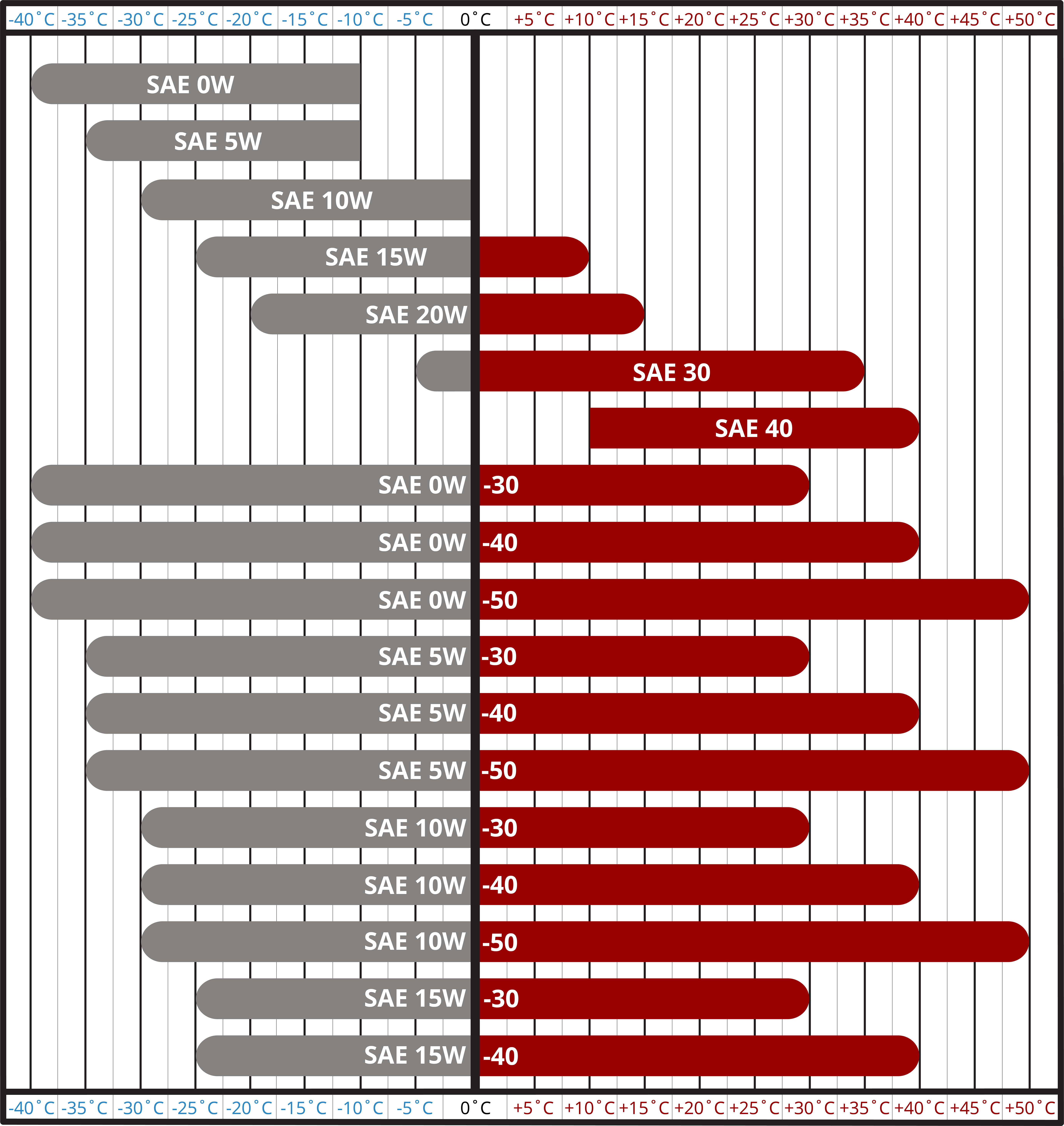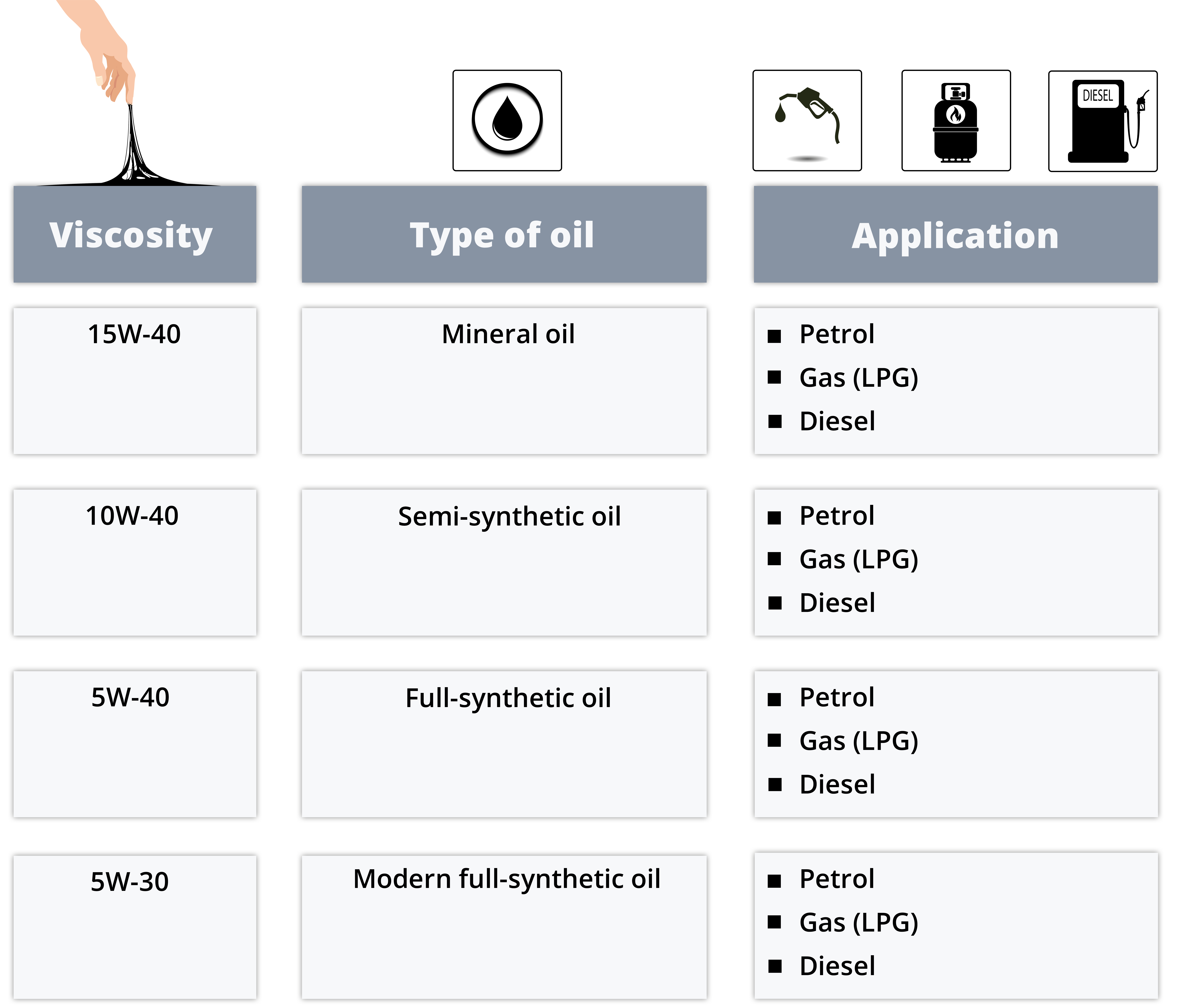Often upon purchase of a new vehicle or machine the required specification of oil is supplied by the manufacturer. When this oil needs to be changed or refilled, you’ll have to look for a replacement oil. But which engine oil do you need? Every manufacturer has its own specifications for their own oil. They refer to the specifications in the service booklet that comes with the vehicle or machine. But suppose you can't find it and you contact the oil supplier, then you should be able to name the technical specifications, such as type of vehicle or machine and the application. Read here more about what to keep in mind when buying engine oil.
There are many different oils for multiple applications. In addition to engine oil, you also have transmission oil, hydraulic oil, chainsaw oil, lubricating oil, brake fluid, compressor oil and multi oils. In this article we look specifically at motor oil and its important specifications.
1. The viscosity
When looking for the right engine oil, it is important to look at the viscosity of engine oil. The viscosity stands for the thickness of the oil and it changes due to changing temperatures.
- Cold oil is viscous and thicker, like honey: high viscosity;
- Hot oil is thinner, such as diesel fuel: low viscosity.
Good to know: The colder it is outside, the thicker and therefore less liquid the oil is when it's cold. The colder it is outside, the thinner the oil must be in cold conditions. So in winter, it is best to choose the number before the 'W' as low as possible as allowed by the manufacturer of the machine or the vehicle. In this way, the oil is sooner with all the parts to be lubricated.
Multigrade and single grade engine oil
Nowadays engine oil has to work well at different temperatures, that's why there are multigrade engine oils. A multigrade 5W-30 engine oil has the same viscosity at low temperatures as a single grade SAE 5 at the same temperature and has the same viscosity at high temperatures as SAE 30 at the same temperature. In the image below we explain the link between different temperatures and viscosity.
 Link between temperatures and viscosity
Link between temperatures and viscosityIn the picture below we further explain oil viscosity.
- The lower the number before the W, the thinner the oil is when it is cold;
- The higher the number behind the W, the thicker the oil stays when it is warm.
 Oil viscosity
Oil viscosityHTHS (High Temperature, High Shear) viscosity is a term widely used nowadays. Thinner oil provides less resistance and therefore lower fuel consumption. If your engine is not made for this, you should choose an oil with a high HTHS viscosity. The HTHS viscosity is shown on the packaging of the engine oil.
In a HTHS test the viscosity is always measured at 150 °C. Manufacturers use the same viscosity, but these oils can have different HTHS values. For example, a manufacturer can use a 5W-30 Low HTHS oil. Pouring this oil into an engine that has been prescribed a 5W-30 High HTHS oil can lead to engine damage.
2. Mineral, synthetic and semi oils
Do you know the difference between mineral oil, synthetic and semi-synthetic (semi) oils? These types of oils are explained below.
- Mineral oil: This is a more natural and crude oil. Especially older vehicles such as old tractors use this motor oil.
- Synthetic oil: To this highly refined base oil dopes (additives) are added, to improve the properties of the oil. Additives are substances of chemical origin.
Some advantages of synthetic oils are:
- More resistant to cold and hot temperatures
- Powerful lubricating film - Semi, also called semi-synthetic oil: This oil is a combination of mineral and synthetic oil.
It is important to make sure you have the right engine oil. The viscosity of the oil is very important. Also the type of oil, mineral, synthetic or semi-synthetic is important. One last tip: Check the oil level regularly and make sure you always have the right spare engine oil with you.
Want to know more about our engine oils? Take a look at our webshop, contact your account manager or contact us at knowledgecenter@kramp.com.

